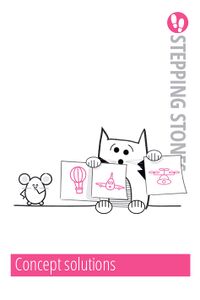Concept Solutions: verschil tussen versies
Naar navigatie springen
Naar zoeken springen
(Nieuwe pagina aangemaakt met '=Why= When you develop a new product or service, the concept summarises ‘the big idea’ or ‘the main principle’ on which your solution will be based. For e...') |
|||
| Regel 1: | Regel 1: | ||
| + | [[Bestand:SS_ConceptSolutions.jpg|200px|thumb|right|]] | ||
=Why= | =Why= | ||
Huidige versie van 16 dec 2019 om 09:07
Inhoud
Why
When you develop a new product or service, the concept summarises ‘the big idea’ or ‘the main principle’ on which your solution will be based. For example, when designing and constructing churches, the floor plan is commonly based on a cross, so ‘God can recognise a church from heaven’.
How
Commonly, several concepts are developed in the concept phase, originating, for example, from ideation sessions, a requirement list, or a USP. A concept should at least describe which problem has to be solved, for whom, using what means, and which opportunity is being created.
Ingredients
- A concise concept description.
- Equally attended concepts.
- A ‘quick and dirty’ prototyping approach to validate the concept.
- A focus on stakeholder needs rather than personal preference.
Practice
In many projects where the solution does not straightforwardly flow from the problem description, designers develop multiple concepts as intermediate steps.
